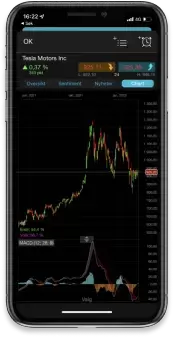European markets and US markets managed to stage a modest rebound yesterday, however it all felt a little bit half hearted, when compared to the steep falls seen on Tuesday.
The FTSE100 managed to stand out, more than reversing its Tuesday losses as investors continued to balance the risks of surging energy prices, supply chain disruptions, and concerns about more persistent inflation.
The recent briefings from central bankers would appear to suggest that they appear to share these concerns, and although they continue to maintain the pretence that this bout of inflation will soon pass, it is also proving to be more enduring than originally anticipated.
This may help to explain some of the recent moves in bond yields, but it could also be simply a case of end of month, and quarter rebalancing as well.
We should get a better idea of sentiment next week, when all this week’s noise is behind us, however it is inescapable that the sudden turnaround in 10-year yields from 1.3% a week ago, to above 1.5% this week, does suggest that bond markets have undergone a significant change in sentiment.
Fears over stagflation do appear to be rising, after all, how could they not be when you see the sorts of increases being seen in energy prices, a trend that will eat into people’s disposable income, thus reducing their capacity to spend on other incidentals.
That said it’s still set to be a negative month for the DAX only its second one this year, while the FTSE100 has barely moved, as we look towards today’s European open, and another positive start.
This uncertainty about the global outlook has prompted a rush into the US dollar, with the pound getting hit particularly hard, over rising concerns about the economic outlook, which has prompted an unwinding in sterling long positions, amid pessimism over the next 12 months. Recent events have also called into question whether the Bank of England would be able to raise rates, even if it were inclined to, especially if the economy were to slow sharply.
Today’s final UK Q2 GDP numbers look set to confirm the solid rebound seen in the recent preliminary numbers. These are expected to remain at 4.8%, more than reversing the -1.6% contraction seen in Q1. On an annualised basis this is expected to show a 22.2% rebound, however that needs to be set in the context of the Q2 lockdown of 2020, which saw economic activity slump by a quarterly -19.8%.
Most of the growth is expected to come in a 7.3% rise personal consumption as restaurants and cinemas reopened, and we could see an upward revision here, along with index of services. On a disappointing note, business investment was disappointing, rebounding a modest 2.4% instead of a predicted 6.8%, and for that we can probably blame the fact that the June reopening was pushed into July, due to a sharp rise in delta cases.
It’s also US Q2 GDP, which didn’t live up to expectations when it was first released a few weeks ago. It had been widely anticipated that we’d see an expansion of 8.5%, and we didn’t really get close, to that, coming in at 6.5%. While we have seen an upward revision since then to 6.6%, with personal consumption making up a good proportion of that, it is clear certain sectors of the economy are still struggling. Today’s small adjustments to the numbers won’t add much to the sum of all knowledge we have about the US economy, given they are over two months out of date, but they should give us an insight into how much momentum the US economy had then, and whether it was already starting to slow.
Weekly jobless claims will be especially important ahead of next week’s payrolls report, and while we did see an unexpected jump to 351k last week, this is expected to slip back to 330k today. Continuing claims are predicted to fall back to 2.8m.
EURUSD – continues to look soft breaking below the 1.1650 area, as well as the 1.1600 lows from November last year, thus opening the trapdoor for a potential move towards the 1.1450 area. We need to see a close below 1.1600, however less we get a short squeeze back to the 1.1760 level.
GBPUSD – this week’s decline has seen us fall through 1.3600, and a move to the 1.3400 area. It now seems probable we’ll see a move towards 1.3375, and then on to 1.3230. We need to see a move back above 1.3620 to stabilise and open a return to 1.3750.
EURGBP – is running into some resistance at the 0.8660/70 area and 200-day MA. This is now a key level, which if broken could see further gains towards 0.8720. Support sits down near the 0.8600 area, and below that at 0.8530.
USDJPY – moved beyond the 111.65 area, and now closing in on the 2020 highs at 112.25 the next target. Support now comes in at the 110.80 area, as well as back at the 110.20 area.
Disclaimer: CMC Markets is an execution-only service provider. The material (whether or not it states any opinions) is for general information purposes only, and does not take into account your personal circumstances or objectives. Nothing in this material is (or should be considered to be) financial, investment or other advice on which reliance should be placed. No opinion given in the material constitutes a recommendation by CMC Markets or the author that any particular investment, security, transaction or investment strategy is suitable for any specific person. The material has not been prepared in accordance with legal requirements designed to promote the independence of investment research. Although we are not specifically prevented from dealing before providing this material, we do not seek to take advantage of the material prior to its dissemination.







